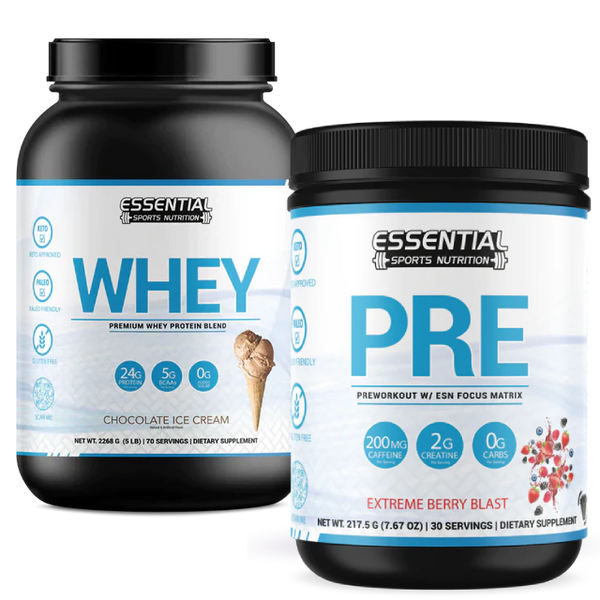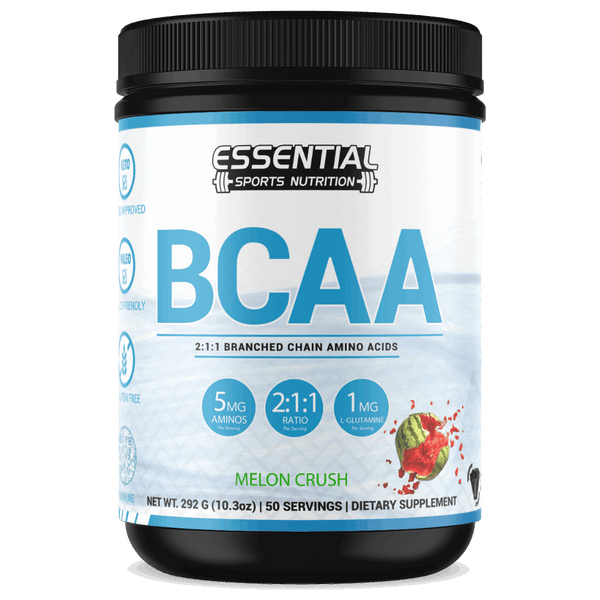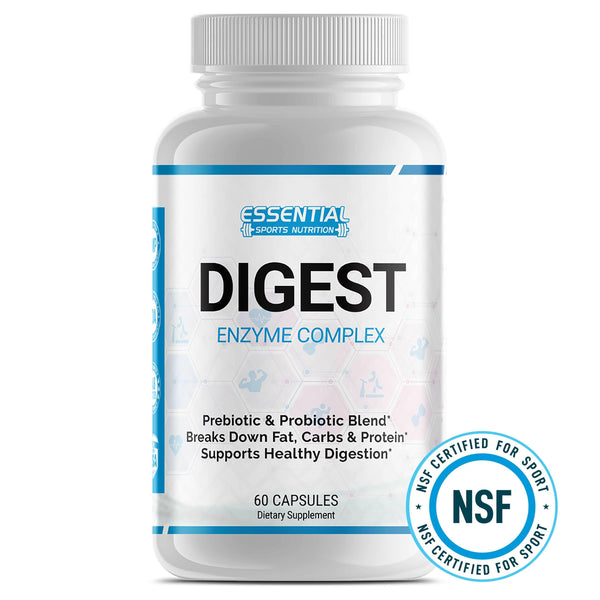The Benefits and Risks of Cardio Exercise
You've likely heard the claim that cardio exercise is a panacea for a host of health issues, but how much of this is evidence-based fact versus optimistic speculation? As you consider incorporating more cardiovascular activities into your fitness regimen, it's important to weigh the various benefits, such as improved heart health and enhanced mental well-being, against potential risks, like overuse injuries or exacerbation of pre-existing conditions.
Different types of cardio, from brisk walking to high-intensity interval training, offer a spectrum of intensity levels to suit your health profile and fitness goals. Yet, with the array of options comes the challenge of choosing wisely to maximize gains without compromising safety.
As you stand at this crossroads of decision-making, bear in mind that knowledge is a powerful ally in tailoring a cardio program that can enrich your life without inadvertently causing harm.
Understanding Cardiovascular Exercise
When you engage in cardiovascular exercise, your heart rate increases, fostering efficient oxygen use within your body's cells to meet the higher energy demands. This aerobic activity enhances your circulatory system, bolstering the heart muscle and promoting better blood flow throughout your body. Regular physical activity like aerobic exercise is fundamental in mitigating the risk of developing heart disease, as it plays a critical role in regulating cholesterol levels.
The benefits of aerobic exercise extend to your resting heart rate as well. Consistently participating in cardiovascular exercise can lead to a lower resting heart rate, indicating a more efficient heart that doesn't have to work as hard to maintain blood circulation. This reduction in workload is vital for long-term cardiac health.
Moreover, exercise reduces the risk factors associated with various chronic conditions. By committing to regular aerobic exercise, you're not just improving your heart's function; you're also laying the groundwork for a healthier life overall. It's a proactive approach that pays dividends, as the consistent elevation of your heart rate through cardiovascular exercise is a cornerstone of maintaining optimal health and longevity.
Benefits of Regular Cardio

You'll find that engaging in regular cardio workouts markedly enhances your heart's efficiency, leading to lower resting blood pressure and a decreased heart rate. This type of exercise also boosts your metabolic rate, which assists in maintaining a healthy weight and improving your body's ability to burn fat. By incorporating consistent cardiovascular activity into your routine, you're investing in both immediate and long-term health benefits.
Enhances Heart Health
How does regular cardio exercise bolster heart health? By consistently engaging in cardiovascular workouts, you can significantly decrease your resting blood pressure and heart rate, contributing to a stronger, more efficient heart.
Here are three critical ways that aerobic activity enhances heart health:
-
Improves Circulation: Regular exercise boosts the heart's ability to pump blood, ensuring that muscles receive the oxygen they need to function properly.
-
Lowers Risk Factors: Aerobic activities can reduce the risk of heart diseases by improving good cholesterol levels and lowering blood fats.
-
Promotes Longevity: Engaging in consistent cardio exercise helps you live longer by reducing the strain on your heart and maintaining healthy blood pressure levels, which overall supports a heart-healthy lifestyle.
Boosts Metabolic Rate
Beyond fortifying heart health, regular cardio also ramps up your metabolic rate, enabling you to burn calories more efficiently throughout the day. Engaging in aerobic exercise, such as high-intensity interval training, catalyzes energy production mechanisms that elevate your metabolic rate even when you're not exercising. This persistent increase in metabolism aids weight loss and supports weight management by enhancing fat burning and increasing energy expenditure.
Scientific evidence underscores how cardio exercise helps to improve cardiovascular health and increase stamina, while concurrently promoting a more robust metabolic function. By integrating regular cardiovascular workouts into your routine, you'll not only bolster your heart's resilience but also forge a more efficient calorie-burning engine within your body, underpinning your overall health and well-being.
Types of Cardio Workouts
As you explore the realm of cardio workouts, you'll encounter various forms, each with distinct physiological impacts. High-intensity interval Training (HIIT) alternates between bursts of intense activity and periods of rest, effectively boosting your metabolic rate and enhancing cardiovascular efficiency. In contrast, Steady-State Endurance Cardio maintains a consistent pace over a longer duration, fostering endurance and promoting heart health.
High-Intensity Interval Training
High-intensity interval Training (HIIT) revolutionizes traditional cardio workouts by interspersing intense bursts of activity with intervals of rest or lower-intensity exercise, offering a time-efficient method to enhance cardiovascular health and metabolic function. As you incorporate HIIT into your exercise routine, you'll notice how this form of aerobic exercise affects your physical fitness.
Here are three key points to consider:
-
Increase Your Stamina: HIIT can significantly boost your endurance, empowering you to perform better in all areas of physical activity.
-
Customizable Workouts: Whether you're a beginner or a seasoned athlete, you can tailor HIIT sessions to match your fitness level. Start slowly and gradually intensify your exercise regimen to reap the full health benefits.
-
Efficient Calorie Burning: High-intensity exercise accelerates metabolism, fostering greater fat loss in a condensed timeframe compared to traditional steady-state cardio.
Steady-State Endurance Cardio
Shifting gears to Steady-State Endurance Cardio, you'll find it involves sustaining a consistent level of effort, typically for 20 minutes or longer, to fortify your heart and enhance aerobic fitness. This form of aerobic exercise is good for your cardiovascular system, as it encourages you to move large muscles in a rhythmic manner, which in turn helps you lose weight and reduce your risk of coronary artery disease. The American Heart Association recommends at least 150 minutes of moderate-intensity aerobic exercise per week, which can make you breathe faster while minimizing the risk of falls and joint stress. While steady-state cardio is less likely to cause overuse injuries, it's important to balance it with other forms of exercise to prevent potential muscle loss.
Cardiovascular Health Risks

Cardiovascular exercises significantly reduce your risk of developing heart-related illnesses by enhancing heart function and lowering blood pressure. Engaging in regular aerobic exercise is a powerful way to control blood pressure and mitigate cardiovascular health risks. Not only does an exercise session help lower the risk of chronic diseases, such as heart disease and type 2 diabetes, but it also plays a crucial role in regulating the balance between high-density lipoprotein (HDL) and low-density lipoprotein (LDL) cholesterol, promoting an overall healthier cardiovascular profile.
To maximize the benefits of your cardio workouts, consider these scientifically supported strategies:
-
Integrate Variety: Mix different types of aerobic exercises to challenge your body and prevent a plateau. This approach helps maintain a robust immune system and supports cardiovascular health.
-
Consistency is Key: Aim for regularity in your workouts to continuously promote heart health, control blood sugar levels, and manage weight, which collectively lowers the risk of type 2 diabetes and other heart-related conditions.
-
Monitor Intensity: Ensure your exercise session is conducted at an appropriate intensity to optimize fat burning and improve heart function without overexerting, which could lead to unnecessary strain on your cardiovascular system.
Mitigating Cardio Workout Risks

While regular aerobic exercise significantly bolsters your heart health, it's crucial to address the potential risks by adopting strategies that ensure safe and effective workouts. To mitigate cardio workout risks, start by progressively increasing exercise intensity and duration. This approach helps lower the chance of overexertion and related injuries, allowing your body to adapt gradually.
Ensure you incorporate proper warm-up and cool-down routines, coupled with stretching exercises, to prepare and recover your muscles and back. This not only helps protect against strains but also enhances the amount of oxygen and nutrients your tissues receive. It's paramount to choose appropriate footwear and equipment, as this can help prevent falls and injuries related to foot and leg discomfort.
Listen attentively to your body's signals. Adjust the intensity of your workouts if you experience discomfort, and don't hesitate to seek professional assistance for persistent pain or injuries. It's also wise to participate in aerobic exercise typically recommended by guidelines and to consult a healthcare professional for personalized exercise advice. These steps are exercise's Top 10 reasons for a safe and beneficial cardio regimen, ensuring that aerobic exercise may help you reach your fitness goals while maintaining overall well-being.
Personalizing Your Cardio Routine

To optimize your cardiovascular regimen, it's essential to select exercises that not only cater to your personal preferences but also align with your specific fitness objectives and physical limitations. Aerobic exercise, for instance, is a cornerstone of cardio training that can help you maintain a healthy weight when combined with a healthy diet. If you're new to exercise, understanding how your body responds to different types of training is crucial.
Here are three key elements to consider when personalizing your cardio routine:
-
Determine Your Fitness Goals: Are you looking to lose weight, improve endurance, or enhance cardiovascular health? Your goals will dictate the intensity, duration, and type of cardio exercises you should incorporate.
-
Assess Your Physical Condition: If you have any limitations or health concerns, select low-impact exercises like cycling or swimming that can minimize strain on your joints while still providing a solid workout.
-
Create a Balanced Schedule: Aim to engage in cardio workouts for at least 150 minutes per week, spread over several days, to improve the quality of your health and fitness.
Monitoring Cardio Progress and Safety

After establishing a personalized cardio routine aligned with your fitness goals and physical condition, it's critical to monitor your progress and ensure the safety of your workouts. Accurate monitoring is essential, not just for those aiming to lose weight but for anyone engaging in aerobic exercise. Tracking heart rate is fundamental to ascertaining you're exercising within the target zone, optimizing the effects of physical activity on lipoprotein (HDL) levels while minimizing the risk of increasing lipoprotein (LDL).
| Parameter | Monitoring Tool | Purpose |
|---|---|---|
| Heart Rate | Heart Rate Monitor | Ensure exercise intensity is within the safe target zone |
| Breathing & Exertion | Self-Assessment | Prevent overexertion and maintain appropriate workout intensity |
| Progress | Workout Log | Track improvements in duration, distance, and intensity |
| Safety Signs | Body Awareness | Identify warning signs like chest pain or dizziness |
For healthy adults, it's recommended to perform at least 30 minutes of moderate-intensity cardio most days. Monitoring cardio progress and safety involves being vigilant about the body's responses. If you're integrating strength training, balance your regimen to avoid overtraining. Pay close attention to your blood sugar levels, especially if you have a condition like diabetes. Always heed warning signs and prioritize safety through the use of appropriate gear and hydration.
Benefits of Aerobic Exercise FAQs:
Q: What are the benefits of cardio exercise?
A: Cardio exercise, also known as aerobic exercise, offers numerous health benefits including improved cardiovascular health, increased endurance, better mood, weight management, and reduced risk of chronic diseases such as heart disease and certain types of cancer.
Q: What are the risks of aerobic exercise?
A: While aerobic exercise has numerous benefits, there are certain risks associated with it, especially if not done correctly or if overdone. These risks may include overuse injuries, muscle strains, and the potential for excessive wear and tear on joints.
Q: How does cardio exercise impact heart rate?
A: Cardio exercise raises your heart rate, which strengthens the heart muscle and improves its ability to pump blood efficiently throughout the body. Over time, this can lead to a lower resting heart rate, a sign of improved cardiovascular fitness.
Q: What is the difference between aerobic and anaerobic exercise?
A: Aerobic exercise is a type of physical activity that is performed at moderate intensity for an extended period, improving the body's ability to use oxygen. Anaerobic exercise, on the other hand, is characterized by higher intensity, shorter bursts of activity that do not rely on oxygen for energy production.
Q: How often should I engage in cardio exercise?
A: The Department of Health and Human Services recommends at least 150 minutes of moderate aerobic exercise or 75 minutes of vigorous aerobic exercise per week, spread out over several days of the week, for overall health benefits.
Q: What are the recommended cardiovascular benefits of regular aerobic exercise?
A: Regular aerobic exercise has been associated with numerous cardiovascular benefits, including improved blood circulation, lowered blood pressure, reduced risk of heart disease, and improved cholesterol levels.
Q: How do the benefits of cardio exercise contribute to overall well-being?
A: The effects of exercise go beyond physical health, as regular cardio exercise can also improve mental well-being by reducing stress, anxiety, and depression while boosting self-esteem and cognitive function.
Q: What are some ways to incorporate cardio into your routine?
A: You can incorporate cardio exercise into your routine through activities such as brisk walking, running, cycling, swimming, dancing, and various aerobic classes, providing a diverse and enjoyable way to stay active and improve cardiovascular health.
Q: What are some potential risks of aerobic exercise training?
A: Risks of aerobic exercise training may include the potential for overuse injuries, such as stress fractures or tendonitis, as well as the risk of overtraining leading to fatigue, decreased performance, and increased susceptibility to illness.
Q: How does resistance exercise complement aerobic exercise in an exercise program?
A: Including resistance exercise in an exercise program alongside aerobic exercise helps to build muscle strength and endurance, improve bone density, and enhance overall physical performance, contributing to a well-rounded fitness regimen.
###
Other Frequently Asked Questions:
What Is the Most Beneficial Form of Cardio?
The most beneficial form of cardio is subjective, as it hinges on your personal goals, health conditions, and preferences. You'll find high-intensity interval training (HIIT) extremely efficient for fat loss and endurance building, while steady-state exercises like running or cycling are great for cardiovascular health. It's crucial to choose an activity you enjoy and can sustain long-term; consistency is key to reaping the maximum benefits from your cardio workouts.
What Cardio Has the Least Risk of Injury?
Imagine gliding through water or pedaling with a breeze against your face; swimming and cycling are your go-to for the least injury-prone cardio. They cushion your joints, offering a safer workout. Likewise, stationary equipment like ellipticals and rowing machines are kind to your body. Walking and hiking also rank low on the injury scale, promoting heart health without the harsh impact. Opt for these gentle activities to keep your workouts consistent and injury-free.
What Are the 3 Main Types of Cardio?
You should know that the three main types of cardio are aerobic exercise, anaerobic exercise, and low heart rate training. Aerobic involves sustained activities like running, anaerobic focuses on short, intense bursts such as weightlifting, and low heart rate training target endurance through prolonged, less intense workouts. Each form targets different fitness aspects, and you'll benefit from integrating all into your regimen for a comprehensive approach to your cardiovascular health.
Is It Good to Do Different Types of Cardio?
You'll be on cloud nine mixing up your cardio routine. This dynamic approach supercharges your fitness journey, staving off monotony while propelling you toward peak physical condition. It sidesteps the pitfall of repetitive strain and simultaneously enhances your muscular balance and agility. A kaleidoscope of cardio exercises ensures comprehensive cardiovascular fortification, laying the groundwork for a robust, versatile, and resilient body. Keep your workouts diverse for the ultimate fitness payoff.
Conclusion
As you navigate the ebbs and flows of your cardio journey, remember that your heart is the captain, guiding you toward a healthier horizon. By tailoring your routine and heeding your body's signals, you'll steer clear of the storms and bask in the glow of well-being. Chart your progress with precision, and you'll find the rhythm that resonates with your life's tempo, ensuring that each beat of your heart is a symphony of vitality.




























